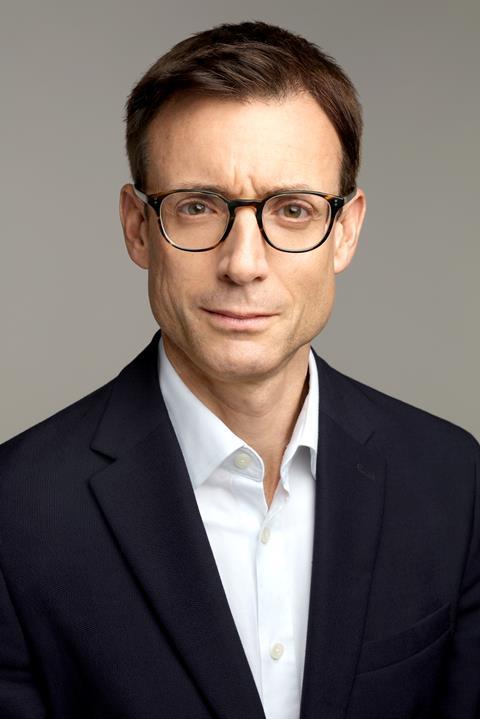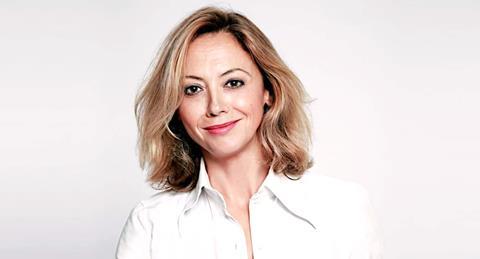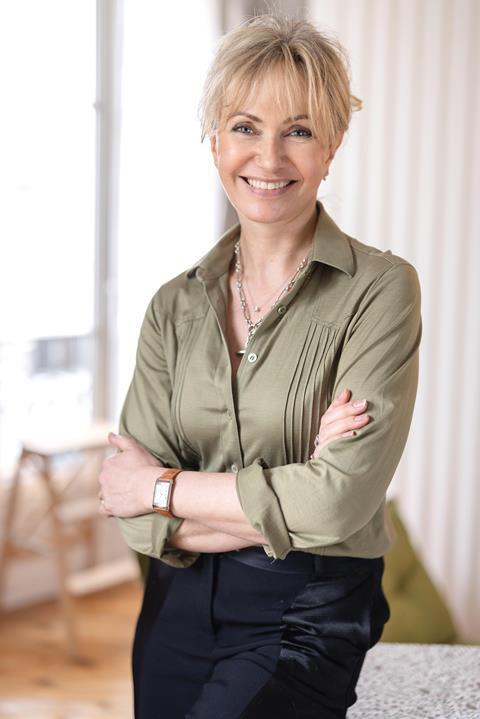How Netflix, Disney+ and Prime Video are re-writing the rules of engagement with broadcasters in Europe - and what it means for the industry
It has been a busy few months of evolution in the relationship between streamers and broadcasters in Europe.
First, French giant TF1 struck a groundbreaking agreement with Netflix in June: from summer 2026, the broadcaster’s five free-to-air (FTA) live channels and its on-demand content from streamer TF1+ will be available on Netflix in France. Audiences will be able to watch TF1 scripted dramas like Brocéliande, soaps such as Demain Nous Appartient and unscripted franchises including Koh Lanta and The Voice, as well as live sport.
Next up was France Télévisions, which unveiled a similar but more immediate deal with Amazon Prime Video that kicked in on 3 July. Prime Video was already distributing third-party and has been carrying live content from FTA broadcasters since 2020, including ARD and ZDF in Germany.
Then, Disney+ and ITVX in the UK announced a “first-of-its-kind strategic relationship” to offer programming from each other’s streaming services. The pact involves each platform supplying the other with curated shows. Disney+ subscribers can watch Mr Bates vs The Post Office, Vera, Love Island and The 1% Club, while ITVX users have access at no extra cost to first seasons of Disney+ shows such as The Bear, Andor and Only Murders In The Building, along with reality series and movies.

And Disney+ didn’t stop there: a few weeks later, it inked a one-way pact in Germany, Austria and Switzerland to offer shows from Germany’s ZDF Studios, such as hit crime series SOKO, via a branded section on the streamer, before revealing another agreement with Spanish broadcaster Atresmedia. Under this deal, Disney+ will take 300 hours of content from its streamer, Atresplayer, for its own service, some on a day-and-date basis.
The various financial arrangements for these agreements haven’t been revealed (although Broadcast International understands that the ITVX/Disney+ arrangement is essentially a value exchange) and they all differ considerably. Yet they also share a single key characteristic: they are being struck by players motivated by the same concerns. In the digital age, broadcasters need to improve reach and brand visibility, while platforms are seeking stickier content to retain subscribers and attract new ones.
TF1 Group chief executive Rodolphe Belmer was clear about his motivation when revealing the Netflix deal: despite streamer TF1+’s viewing fi gures hitting 35 million in the first half of 2025, the broadcaster – along with its traditional competitors – is losing reach.
French TV channels’ reach has fallen from 80% to 70% over the past decade, he said – without revealing specifi c fi gures for TF1 – but the trend is hitting key advertising demographics hardest. The Netflix deal provides an antidote of sorts: its viewers are the most complementary to TF1’s audience, with only a 36% overlap in weekly reach, according to internal research. It means TF1 can expand its advertising base (it will sell addressed ads for its shows on the streamer), while Netflix gains reams of local content. But why now?
“We’re offering greater scale and helping with the cost of producing high-quality content”
Karl Holmes, Disney+
Belmer, who sat on Netflix’s board between 2018 and 2022, outlined his reasoning: previous linear viewing declines had not overly aff ected revenues because ad rates could be raised. That period is now over and in the past three to four quarters, almost all big broadcasters have started to see linear ad revenues decline, “and even more so in the UK”, he added.
Indeed, the decline in UK broadcasters’ reach was underlined in regulator Ofcom’s Media Nations UK 2025 report. Last year, an average of 74% of British individuals watched broadcast TV each week, according to Barb. That’s a 14-point drop over five years.
ITV’s average weekly reach fell to just 45% of British individuals, down from 62% in 2019. As for streamers, their penetration is plateauing at around 68% of UK households, with Disney+ at roughly 25%. Here, too, viewership is complementary, with Disney+ skewing younger, its shows being mostly watched by those under 34.
Distinct deals
“If you compare and contrast the deals we’ve done, it speaks to the differences in what broadcasters are trying to achieve,” says Karl Holmes, senior vice-president of direct-to-consumer and general manager for Disney+ across EMEA. For ITVX and ZDF Studios, it’s largely about accessing a younger demo, while the Atresplayer pact – supporting a streamer that has already enjoyed success with a younger demo – is more about providing a broader audience.

“We’re offering that greater scale for their content and we’re also helping them to fund some of the cost of producing high-quality original content,” he adds, pointing to Mar Afuera, the recently launched remake of Beta Film drama Mare Fuori, which went out day-and-date on Disney+ and Atresplayer. Other Atresplayer hits such as Vis A Vis and Física O Química will also appear on Disney+.
“All the deals we’ve struck are distinct,” Holmes says, pointing to another, less-reported deal – with Portugal’s SIC and streamer Opto – in which Disney+ will provide five episodes of telenovela Vitoria each Sunday to its subscribers, before the show’s FTA debut.
For Disney+, the gain from these broadcaster partnerships is simple: to provide more local programming to subscribers. “FTA broadcasters have the most iconic content and still have the largest production budgets, and we want to bring that content to Disney+ customers,” Holmes says.
“Amazon Prime Video brings us a complementary audience, younger and more male”
Encarna Marquez, France Télévisions
For broadcasters, these deals are seen as a way to establish their brands among audiences who have adopted different viewing habits and are no longer as familiar with them.
“Amazon Prime Video brings us a complementary audience, younger and more male,” says France Télévisions director of digital Encarna Marquez.

The broadcaster’s motivation for such deals is largely to satisfy its public service remit by reaching all audiences. And Prime Video is likely just the first deal for the broadcaster: “Aggregation is a movement in tune with the times,” Marquez adds.
The benefits of such deals to both streamers and broadcasters are understandable, but there is clearly competition building. This is playing out in a different way compared with when the major networks were competing on common distribution platforms, whether it was DTT, cable or IPTV, and viewers could easily flip through channels.
Indeed, Netflix’s strong audience retention was highlighted by TF1’s Belmer as another reason for their partnership: TF1’s internal research found that half of Netflix’s estimated 13 million French subscribers go to the streamer first to watch content and – due to the quantity and quality of content on offer – remain there. About 40% of Netflix viewers never go to TF1+ or any other free streaming platform, he said.

Netflix co-chief executive Greg Peters told The Financial Times over the summer that the TF1 deal will bring different kinds of shows, including audience-loyalty builders such as daily soaps and live sport (TF1 has rights to a raft of major sporting events). Netflix will also provide access to TF1-owned news channel LCI via the deal.
Peters added that Netflix will see how the partnership works before exploring further tie-ups elsewhere, although murmurings across Europe and beyond suggest the streamer is already undertaking the groundwork to find out which countries might offer the most potential.
Market concerns
Inevitably, the two French partnerships between streamers and broadcasters have left its domestic market disoriented, raising more questions than answers due to the number of possible implications.
French broadcasting authority Arcom is still studying the effects – it will be an important market evolution if streamers are to become service providers. Not only does Netflix need to adapt its platform (which explains the one-year delay), it will also have to register with Arcom as an aggregator of third-party services, and pay distributors’ taxes.
Producers, rights holders and distributors have much at stake, even though the deals won’t affect streamers’ investment obligations in local production in France as it is based on a percentage of their revenue.
Yet the effect of streamers carrying swathes of broadcasters’ content and live channels, while also promoting broadcasters’ biggest shows (as seems to be the case with the TF1-Netflix and France Télévisions-Amazon deals) could be far-reaching.

It’s one thing to have linear channels and apps carried on a platform among numerous other channels and apps, but it seems to be quite another if third-party shows are dotted among a streamer’s original and acquired programme offering. Several producers and distributors point out that Canal+ has, to some extent, already been doing this as an OTT distributor, but its subscription base isn’t comparable to Netflix. “Perhaps we shouldn’t have let it go for Canal+,” ponders one exec.
“I have to admit that we were a bit surprised by the TF1-Netflix announcement because it occurred only a few days after trade organisations had updated their agreement with TF1,” says Raphaelle Mathieu, president of French TV content distributors’ union Sedpa.
“We sell to an audience base. When broadcasters multiply their reach, they can’t expect this to be for free”
Raphaelle Mathieu, Sedpa
That updated agreement was struck in June with producers, distributors and authors’ trade unions. It granted transactional video on demand (TVoD) and electronic sell-through (EST) rights to the drama, animation and docs that TF1 commissions, and followed the development of micropayments on TF1+. In return, producers receive more investment. The agreement already provided TF1 with SVoD rights because TF1+ is marketing an ad-free, low-cost subscription. But these rights were not originally intended for Netflix.
“Everyone is losing reach and wants to aggregate consumers, we understand that, but one issue is rights valuation,” Mathieu explains. “We sell to an audience base. When broadcasters multiply their reach, they cannot expect this to be for free.

“As distributors, we want our shows to circulate, and with these deals, they do. But the rights holders are not part of the deal. In addition, a show sold to TF1 and TF1+ is now going to end up in a dedicated space on Netflix. That restricts our ability to sell it to Netflix or its competitors for another window.
“These deals blur the lines between SVoD and AVoD windows,” she adds. “We are asking for a general discussion over these rights.”
Windowing is a particular concern for French drama producers, many of whom are wondering how the spate of deals over the summer will affect sales and streamer/broadcaster co-productions.
The issue was highlighted by Banijay France chief executive Alexia Laroche Joubert in a LinkedIn post, but she declined to comment for this piece. Banijay France is currently supplying dramas to TF1 and France Télévisions that have second-window deals with streamers different from those the broadcasters have partnered with. TF1 costume mini-series Montmartre is to go to Disney+ for a second run, for example, and France 2’s Désenchantée is set for HBO Max.
Independent production obligations in France mean streamers have become significant partners in ambitious domestic dramas commissioned by broadcasters, securing either the first or second window – on top of their own originals investments.

HBO Max is the latest to adopt these practices, highlighting five shows at the Festival de la Fiction de la Rochelle, one of which is an original (Merteuil) and four others co-ventures with broadcasters, including another series with France 2 in the second window.
Elsewhere, Federation’s Lucky Luke is produced for France Télévisions and Disney+, and romantic comedy French Lover is for Netflix, with a second run on TF1. Netflix has also partnered on Summer Of ’36 with TF1 and producer Quad Drama.
“The question is whether these deals will affect co-funding, and there are two aspects to that,” says Quad Drama chief executive Iris Bucher, who is also president of producers’ union Uspa.
“One is: will Netflix still be interested in co-funding a show such as Summer Of ’36 if it will get it through the TF1 deal? To that question, Rodolphe Belmer reassured us that this was anticipated in the deal and that it will continue to be possible to secure co-funding with Netflix for ambitious projects.
“The other issue is: will it still be possible to co-fund a TF1 series with Disney or Amazon? Getting a streamer on board enables us to fund ambitious dramas that couldn’t be made with just traditional French funding alone, and to meet the expectations of audiences who are now used to higher and higher quality dramas from all over the world.”
Windowing challenges

Bucher concedes the announcements have caused a stir. “People are worried,” she says, with concerns that the deals could mean shows will be milked dry early on, making later window deals challenging. “For us as producers, things are difficult to figure out. Of course, we are always happy with a larger audience. However, we have no guarantee as to how our shows will be exposed, or about the revenues they will generate. We produce [a show] for a network, it’s shown on another. That puts us at odds with the other rights holders.”
All eyes are now on what happens next. The France Télévisions-Amazon deal – which began in July – included some France TV shows being promoted on the streamer but, at press time, it seems linear channels are the main focus. France TV says that some series have already been promoted and others will follow.
It perhaps underlines how these deals remain a work in progress. When interviewed in July, France Télévision’s Marquez said that the broadcaster was conscious that such arrangements could question the value chain and co-production models, adding that it was mindful of producers’ possible concerns.
Value in local content
One key takeaway is the apparent value being placed on local content by streamers. Netflix, Prime Video and Disney+ are all in the market for more domestic shows to create the stickiest of services to retain subscribers. And they’re clearly willing to work to different models to achieve that.
“We aspire to be the best SVoD partner for free-to-air businesses around Europe,” says Disney+’s Holmes, pointing to “the flexibility” and range of recent agreements.
It is less clear how global streamers’ local production strategies may shift if these nascent agreements are successful. Holmes, however, is clear that countries such as the UK, France, Germany and Spain are “priority markets for [Disney+] originals and we expect that to continue”.
Originals will “squarely target” the Disney+ subscriber base, while the deals unveiled over the summer will deliver greater domestic heft. “We need to grow our volume of local content,” he adds.
Yet the speed at which broadcaster-streamer relationships are changing is raising questions – and market sensitivity is clear, underlined by many execs choosing to only speak on background for this piece.
Yet they all agree that more deals will land in the coming months. “We really believe in the principle of bringing free-to-air content to our customers and helping free-to-air businesses to become more economically successful. We will do more and they won’t all be the same,” says Holmes, neatly reflecting the state of the current market.









No comments yet